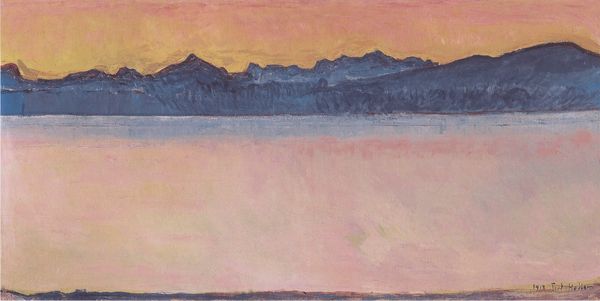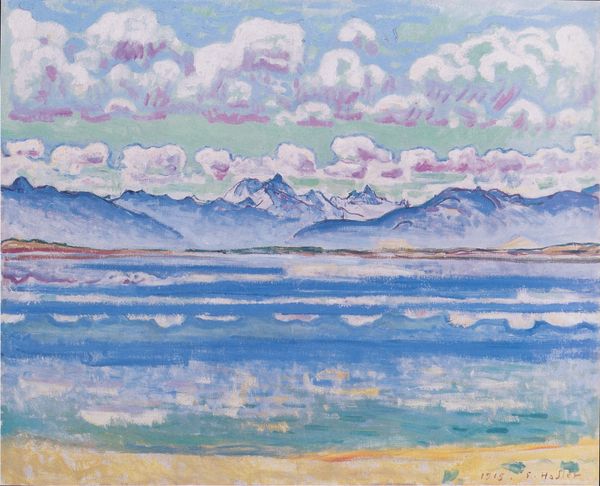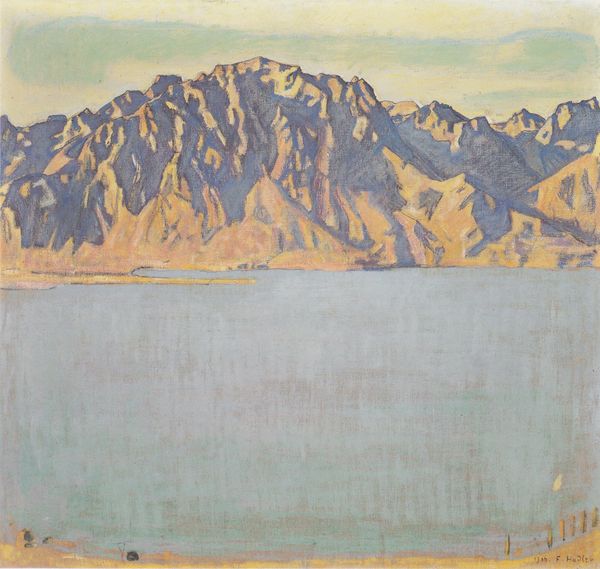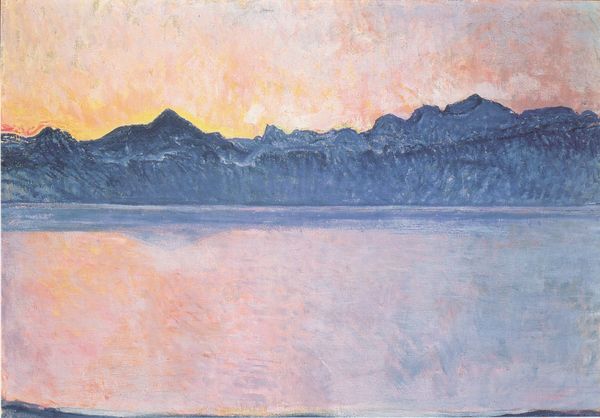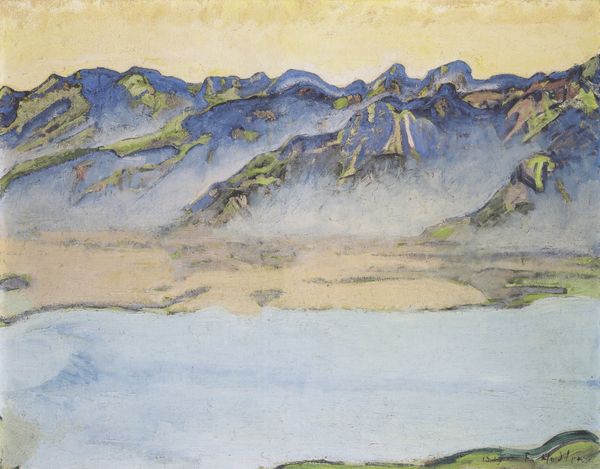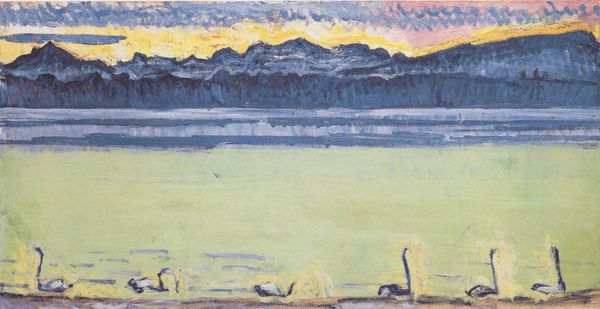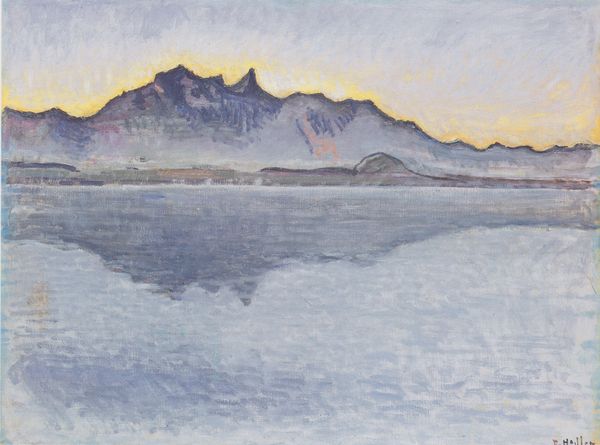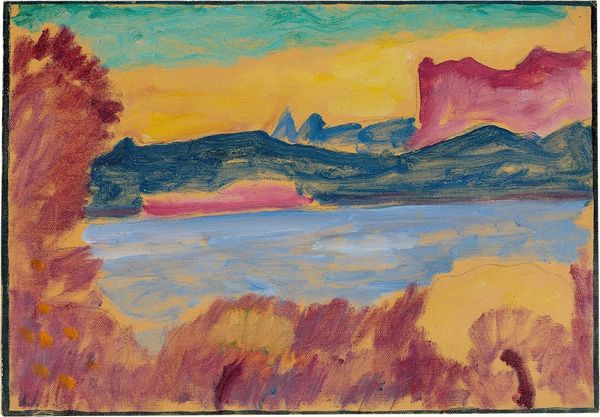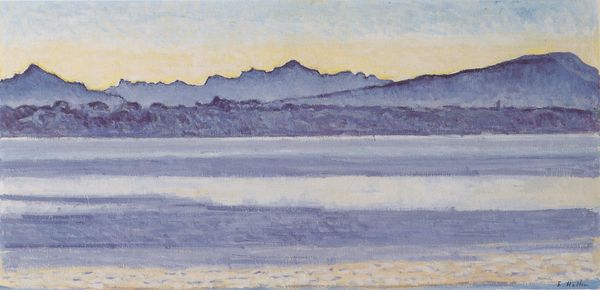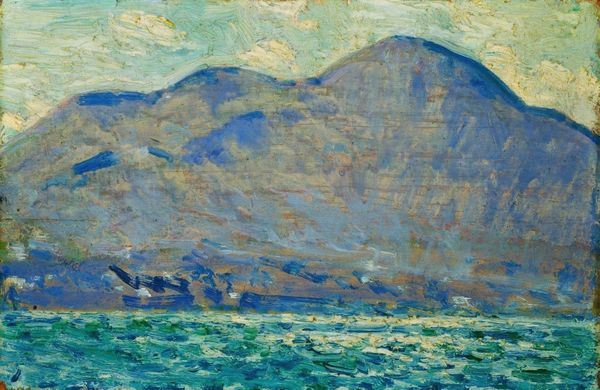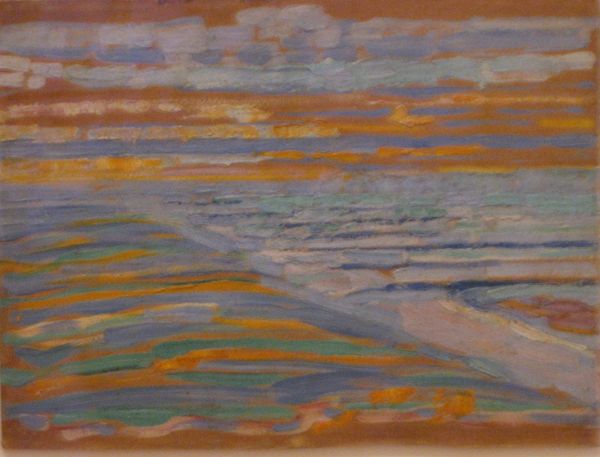
painting, oil-paint
#
water colours
#
painting
#
oil-paint
#
landscape
#
oil painting
#
acrylic on canvas
#
mountain
#
expressionism
#
symbolism
#
modernism
#
watercolor
Dimensions: 62.5 x 80 cm
Copyright: Public domain
Curator: Looking at Ferdinand Hodler's "Lake Geneva, overlooking the Savoyerberge" from 1906, what grabs you first? Editor: Honestly? That hypnotic water! It's a swathe of teal and muted greens, like gazing into another world. The overall palette is so serene; it invites contemplation. Curator: Hodler’s landscapes, including this one rendered in oil paint, are steeped in symbolism. He aimed to convey more than just what the eye sees; he sought the underlying harmony and structure of nature. The repetition of forms – the mountains mirroring in the lake and the clouds – speaks to that quest for order. Editor: There’s almost a hypnotic quality in that symmetry. Yet, paradoxically, there's an intense personal expression. The mountains aren’t just mountains; they’re towering presences, almost guardians, and they feel incredibly monumental, in contrast with that thin stripe of clouds. Curator: Hodler lived much of his life overlooking Lake Geneva. It was both a constant source of inspiration and, during periods of personal tragedy, a comforting presence. The repetitive elements we discussed? Some view them as a reflection of the cyclical nature of life and death, of grief and resilience. The “parallelism,” as Hodler called it, gives form to the natural rhythm, and offers solace. Editor: That’s a profound reading! I definitely pick up on the stoicism. You know, given that it’s Expressionist and Symbolist, it isn’t tormented in the way I’d expect. The colors are calming; the composition is stable and almost classical. It’s less of a scream and more of a… sigh. Curator: A sigh… that captures it beautifully. It is far more composed than some of his more overtly emotional works. He was attempting, especially in his later works, to find universal forms, shapes, colors, arrangements, that would move the viewer irrespective of their personal background. It is his meditation of order. Editor: So, a personal vision reaching for universal resonance. I think that makes it incredibly powerful. Thank you for sharing. Curator: My pleasure. I think it gives us plenty to think about in relation to Hodler's role in early Modernism and beyond.
Comments
No comments
Be the first to comment and join the conversation on the ultimate creative platform.
